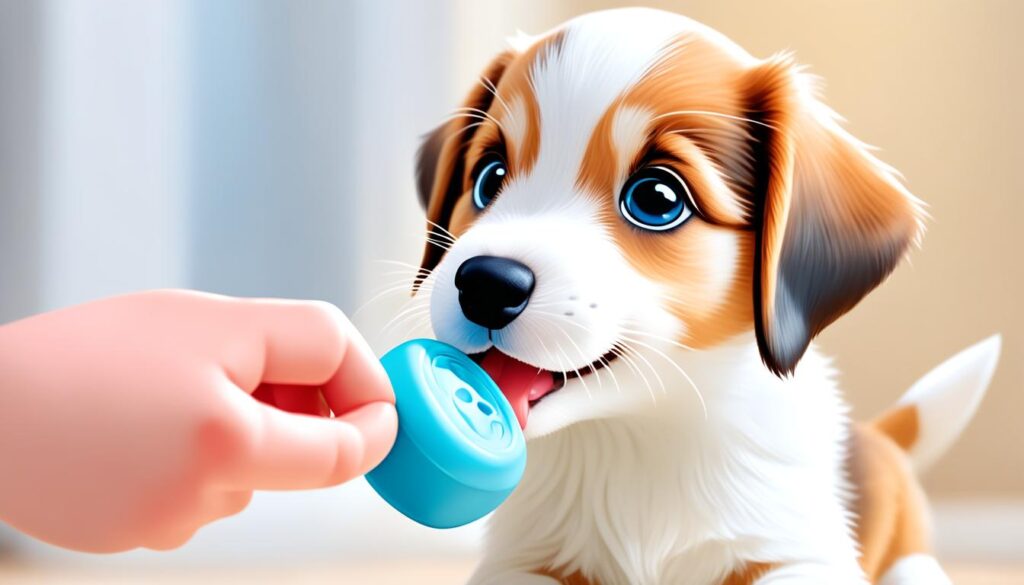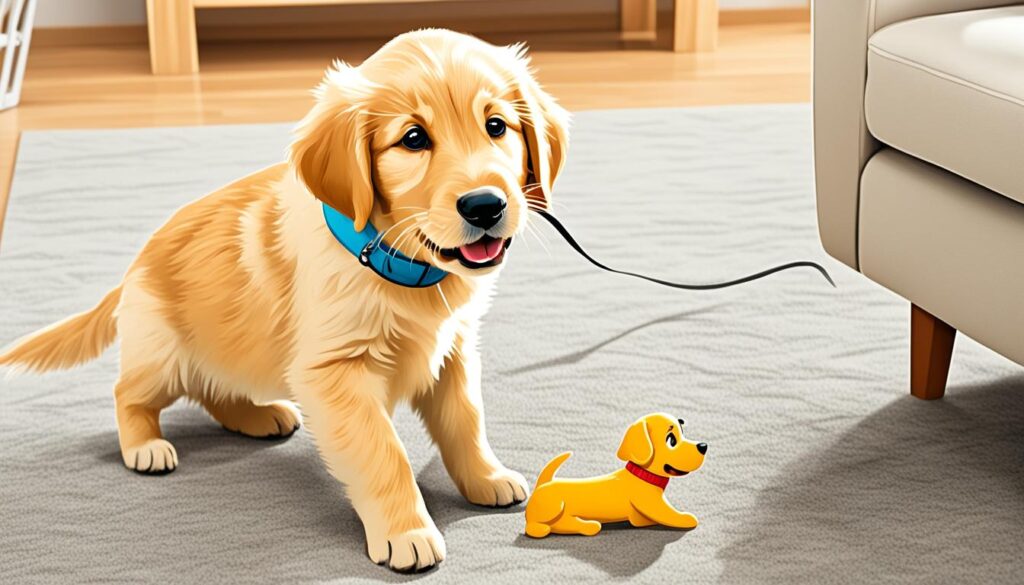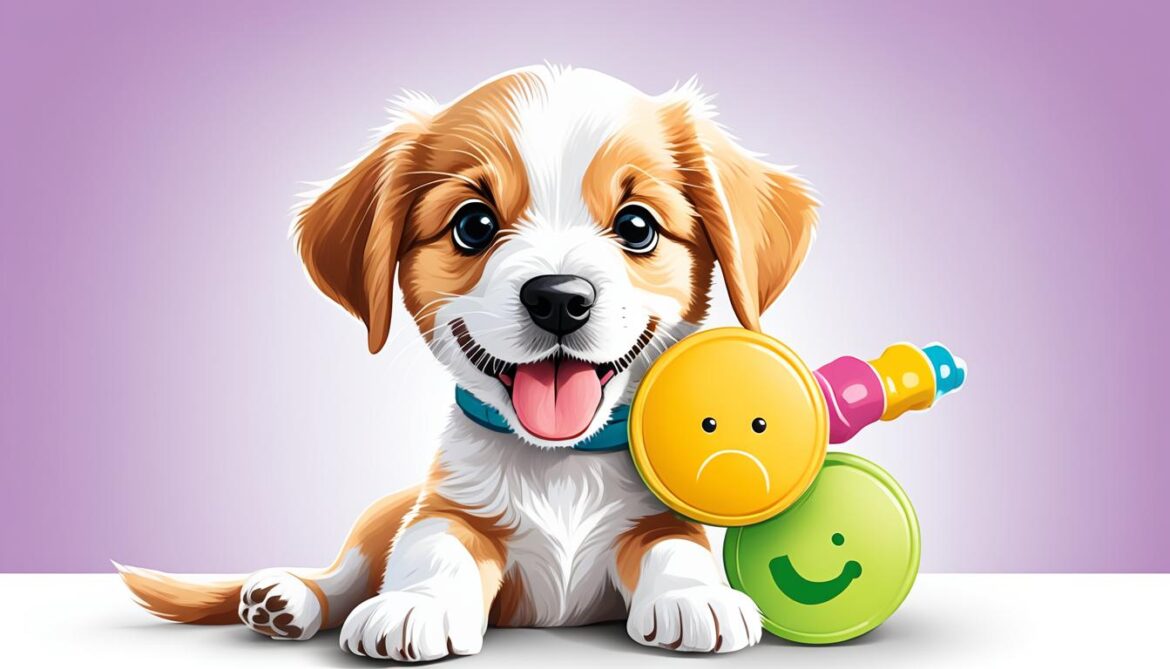Are you tired of your adorable puppy constantly nipping at your fingers, toes, and household items? Do you find yourself wondering how to stop a puppy from biting? Look no further; we have the gentle, effective tips you need to put an end to this behavior once and for all!
While puppy biting may be a common challenge for pet owners, it doesn’t have to be a forever problem. By understanding the reasons behind this behavior and implementing the right training techniques, you can guide your furry friend towards becoming a well-behaved companion.
So, are you ready to discover the secrets to preventing puppy bites? Let’s delve into the world of puppy training and explore the techniques that really work.
Understanding Puppy Biting Behavior
Before delving into training techniques, it’s vital to comprehend the reasons behind puppy biting. By understanding the underlying causes, you can manage and address this behavior more effectively. Let’s explore the various motivations that drive puppies to bite:
- Teething: Puppies, like human babies, experience teething discomfort, causing them to chew and bite to relieve sore gums.
- Exploration: Puppies use their mouths to explore their environment, much like how babies use their hands. They’re curious creatures, and biting is a way to learn about objects and textures.
- Social Interaction: Puppies nip and bite during play as a form of socialization. This behavior mimics interactions with their littermates and helps establish dominance and boundaries.
By recognizing these motivations, you can tailor your training strategies to address them effectively. Let’s proceed to the next section and learn various techniques to inhibit and redirect your puppy’s biting behavior.
Bite Inhibition Training for Puppies
Teaching bite inhibition in puppies is crucial in curbing unwanted biting habits. By guiding your puppy to understand the intensity of their bites and control it willingly, you can reduce the risk of accidental injury when they interact with others. In this section, we will explore various effective puppy training techniques to establish bite inhibition.
Bite inhibition focuses on teaching puppies to control the force of their biting without stopping them from using their mouths altogether. This training method allows puppies to learn valuable lessons in bite strength, making them aware of how much pressure they exert during play or interaction.
“Bite inhibition is an important part of a puppy’s socialization, helping them develop better bite control and communication skills with other dogs and humans.” – Dr. Emma Thompson, Animal Behaviorist
One popular technique for bite inhibition training is the “yelp and withdraw” method. When your puppy bites too hard during play, emit a high-pitched yelp to mimic the sounds their littermates make when bitten too hard. Immediately withdraw your attention by turning away or leaving the room for a short time. This teaches your puppy that biting too hard ends the fun and social interaction.
Another effective technique is the time-out method. When your puppy bites, say “ouch” firmly and gently remove your hand or body part from their reach. Ignore them for a few moments before resuming play. This teaches them that biting leads to the cessation of attention.
Bite Inhibition Techniques
| Technique | Description |
|---|---|
| “Yelp and Withdraw” | Make a high-pitched yelp and withdraw attention when your puppy bites too hard during play |
| Time-Out Method | Say “ouch” firmly, remove your hand, and ignore your puppy for a few moments when they bite |
| Taste Deterrents | Apply safe and bitter-tasting substances to objects to discourage biting |
| Redirecting to Appropriate Chew Toys | Offer suitable chew toys as an alternative to inappropriate biting |
It’s important to note that during bite inhibition training, you should never use punishment or physically harm your puppy. This can lead to fear, anxiety, and aggression, making the training process counterproductive.
Consistency and patience are essential when training bite inhibition in puppies. With time and consistent reinforcement, your furry friend will learn to control their biting impulses and develop better social skills.

Encouraging Proper Chewing and Teething Remedies
Puppies are known for their natural instinct to chew, especially during the teething phase. Chewing helps alleviate discomfort and promotes healthy tooth and jaw development. To redirect your puppy’s biting behavior towards more suitable objects, it’s important to offer appropriate chew toys and provide teething remedies. Here are some tips to help you choose the right chew toys and natural remedies:
Choosing the Right Chew Toys
When selecting chew toys for your puppy, it’s essential to consider their size, age, and chewing strength. Opt for toys that are specifically designed for teething puppies, as they are made from safe and durable materials. Look for toys that are soft enough to provide relief but strong enough to withstand your puppy’s chewing. Avoid toys with small parts that could be easily swallowed or pose a choking hazard.
Consider interactive toys that can keep your puppy mentally stimulated while they chew. These toys often have hidden treats or compartments that require problem-solving skills, keeping their minds engaged and reducing boredom-related biting behaviors.
Natural Teething Remedies
Natural teething remedies can provide additional relief for your teething puppy. Here are a few safe and effective options:
- Frozen washcloth: Soak a clean washcloth in water, then freeze it. The cold temperature can soothe your puppy’s gums and help reduce inflammation.
- Frozen vegetables: Some puppies find relief from chewing on frozen vegetables like carrots or sweet potatoes. Make sure the vegetables are appropriately sized and supervise your puppy while they chew.
- Chamomile tea: Brew a cup of chamomile tea, let it cool, and pour a small amount into an ice cube tray. Once frozen, give your puppy a chamomile ice cube to chew. Chamomile has natural calming properties and can help alleviate teething discomfort.
Remember to always monitor your puppy while they chew and provide alternatives if they show interest in inappropriate items. Regularly inspect and replace chew toys that show signs of wear or damage to ensure your puppy’s safety.
Incorporating appropriate chew toys and natural teething remedies into your puppy’s routine will help redirect their biting behavior and promote healthy teething habits. By providing relief and engaging alternatives, you can ensure your puppy’s teething experience is as comfortable as possible.
| Benefits of Proper Chewing and Teething Remedies | Importance |
|---|---|
| Relieves teething discomfort | Teething can be painful for puppies, and chewing provides relief |
| Promotes healthy tooth and jaw development | Chewing helps strengthen jaw muscles and maintain dental hygiene |
| Prevents destructive chewing | Redirecting biting behavior towards appropriate chew toys reduces the risk of damage to furniture and belongings |
| Enhances mental stimulation | Interactive chew toys engage your puppy’s mind, preventing boredom and promoting overall well-being |
| Fosters positive chewing habits | By providing suitable alternatives, your puppy learns what items are acceptable to chew on |
Consistency and Positive Reinforcement in Puppy Training
Consistency and positive reinforcement are crucial aspects of effective puppy training. By implementing these techniques, you can reinforce desired behaviors, encourage gentle play, and discourage biting. By using consistent training methods and rewarding positive behavior, you can help your puppy learn appropriate boundaries and reduce biting incidents.
“Consistency is the key to successful puppy training. Make sure everyone in the household is on the same page and follows the same rules. This will help your puppy understand what is expected of them and avoid confusion.”
Firstly, consistency in training means setting clear expectations for your puppy. Establish consistent rules and boundaries, such as not allowing your puppy to bite during playtime. If your puppy starts to bite, redirect their attention to a more appropriate toy or activity.
Positive reinforcement plays a significant role in encouraging good behavior and reducing biting tendencies. When your puppy displays calm and gentle behavior, offer verbal praise, petting, or a small treat as a reward. This positive association will reinforce the idea that gentle play is encouraged, while biting is discouraged.
Effective Tips for Consistency and Positive Reinforcement:
- Establish a consistent routine for feeding, exercise, and playtime.
- Use clear and consistent verbal cues, such as “gentle” or “no bite,” to communicate expectations.
- Provide your puppy with plenty of appropriate chew toys to redirect their biting behavior.
- Avoid rough play or encouraging aggressive behavior, as it may reinforce biting tendencies.
- Limit your puppy’s exposure to situations that may trigger excessive excitement or overstimulation, which can lead to biting.
Remember, patience and persistence are key when training a puppy. It takes time for them to learn and understand the boundaries you set. With consistency and positive reinforcement, you can help your puppy develop good habits and become a well-behaved companion.

Redirecting Attention and Providing Mental Stimulation
Sometimes, puppies bite out of boredom or a desire for attention. It’s important to redirect their energy and provide mental stimulation to prevent them from resorting to biting. By keeping your puppy mentally engaged, you can reduce their desire to bite as a way of seeking stimulation.
There are several methods you can employ to redirect your puppy’s attention and provide mental stimulation:
- Interactive Toys: Introduce interactive toys that require problem-solving and engage your puppy’s mind. Puzzle toys, treat-dispensing toys, and hide-and-seek games can keep your puppy entertained while diverting their biting focus.
- Training Games: Incorporate training games into your puppy’s routine to stimulate their brain and enhance their focus. Basic commands such as sit, stay, and fetch not only provide mental stimulation but also reinforce good behavior.
- Enrichment Activities: Create enrichment activities that challenge your puppy’s senses and promote mental engagement. Scatter treats in the grass or hide toys around the house for your puppy to search for, encouraging them to use their nose and mind.
Remember, mental stimulation is just as important as physical exercise for a happy and well-behaved puppy.
By incorporating these techniques into your puppy’s daily routine, you can effectively redirect their attention and provide the mental stimulation they need. This will not only reduce biting behaviors but also promote a healthier and happier bond between you and your furry friend.
| Benefits of Redirecting Attention and Providing Mental Stimulation | How It Helps in Training a Puppy Not to Bite |
|---|---|
| 1. Prevents boredom and destructive behavior | 1. Reduces the likelihood of biting as a way of seeking stimulation |
| 2. Enhances mental agility and problem-solving skills | 2. Redirects the puppy’s focus from biting to mentally challenging activities |
| 3. Builds a stronger bond between you and your puppy | 3. Provides a positive outlet for your puppy’s energy and attention |
By following these techniques, you’ll create a stimulating environment that encourages your puppy to explore, think, and play, while reducing their tendency to bite inappropriately. Remember to be patient and consistent in your training efforts, and always provide positive reinforcement for desired behavior.
Conclusion
In conclusion, understanding the reasons behind puppy biting and implementing consistent training techniques are key to stopping this behavior effectively. Patience is essential throughout the training process, as well as providing positive reinforcement to encourage desired behaviors. By following the gentle and effective tips discussed in this article, you can guide your puppy to become a well-behaved pet that respects appropriate boundaries and refrains from disruptive biting behaviors.
Remember that puppies naturally explore their environment through their mouths, and teaching them bite inhibition is crucial to prevent accidental injuries. Additionally, providing appropriate chew toys and teething remedies will redirect their biting tendencies towards more suitable objects.
Consistency and positive reinforcement play a vital role in puppy training. By establishing clear boundaries and rewarding good behavior, you can shape your puppy’s understanding of what is acceptable and discourage biting incidents.
Lastly, it’s important to provide mental stimulation and redirect your puppy’s attention when they exhibit biting behavior out of boredom or a need for attention. Interactive toys and engaging activities will keep them mentally engaged and reduce the desire to bite as a means of seeking stimulation.
FAQ
How can I stop my puppy from biting?
To stop your puppy from biting, you can try several techniques. One effective method is to redirect their attention to appropriate chew toys whenever they start biting. You can also yelp or say “ouch” in a high-pitched voice to mimic the reaction of their littermates when they bite too hard. This helps teach them bite inhibition. Consistency and positive reinforcement are key in training. Reward your puppy for gentle behavior and discourage biting by withdrawing attention or redirecting their focus.
Why do puppies bite?
Puppies bite for various reasons, including teething, exploration, and social interaction. Teething causes discomfort and chewing helps alleviate it. Puppies also use their mouths to gather information about their surroundings. Additionally, biting is a natural part of play and socialization among littermates. Understanding these reasons can help you address the biting behavior effectively.
How can I teach my puppy bite inhibition?
Teaching bite inhibition is crucial in preventing excessive biting. When your puppy bites too hard, let out a high-pitched yelp or say “ouch” and immediately withdraw attention. Repeat this process consistently to help them learn that biting too hard results in the end of play. Additionally, provide appropriate chew toys for them to redirect their biting behavior to more suitable objects.
What are some teething remedies for puppies?
There are several teething remedies that can help ease your puppy’s discomfort during the teething phase. Chilled teething toys, frozen washcloths, and ice cubes wrapped in a soft cloth can provide relief. Avoid using hard objects that may damage their teeth. Offering appropriate chew toys made of durable materials can also help redirect their biting toward more suitable objects.
How can consistency and positive reinforcement help in puppy training?
Consistency and positive reinforcement are essential in puppy training. Consistently use the same commands and techniques to reinforce desired behaviors and discourage biting. Positive reinforcement involves rewarding your puppy for good behavior with treats, praise, or playtime. This helps them associate positive outcomes with appropriate behavior, making them more likely to repeat it.
What can I do to redirect my puppy’s attention and provide mental stimulation?
To redirect your puppy’s attention and provide mental stimulation, offer interactive toys that challenge their minds. Puzzle toys, treat-dispensing toys, and games that require problem-solving can keep them engaged and entertained. Engaging in regular training sessions and providing daily playtime and exercise also contribute to mental stimulation.
